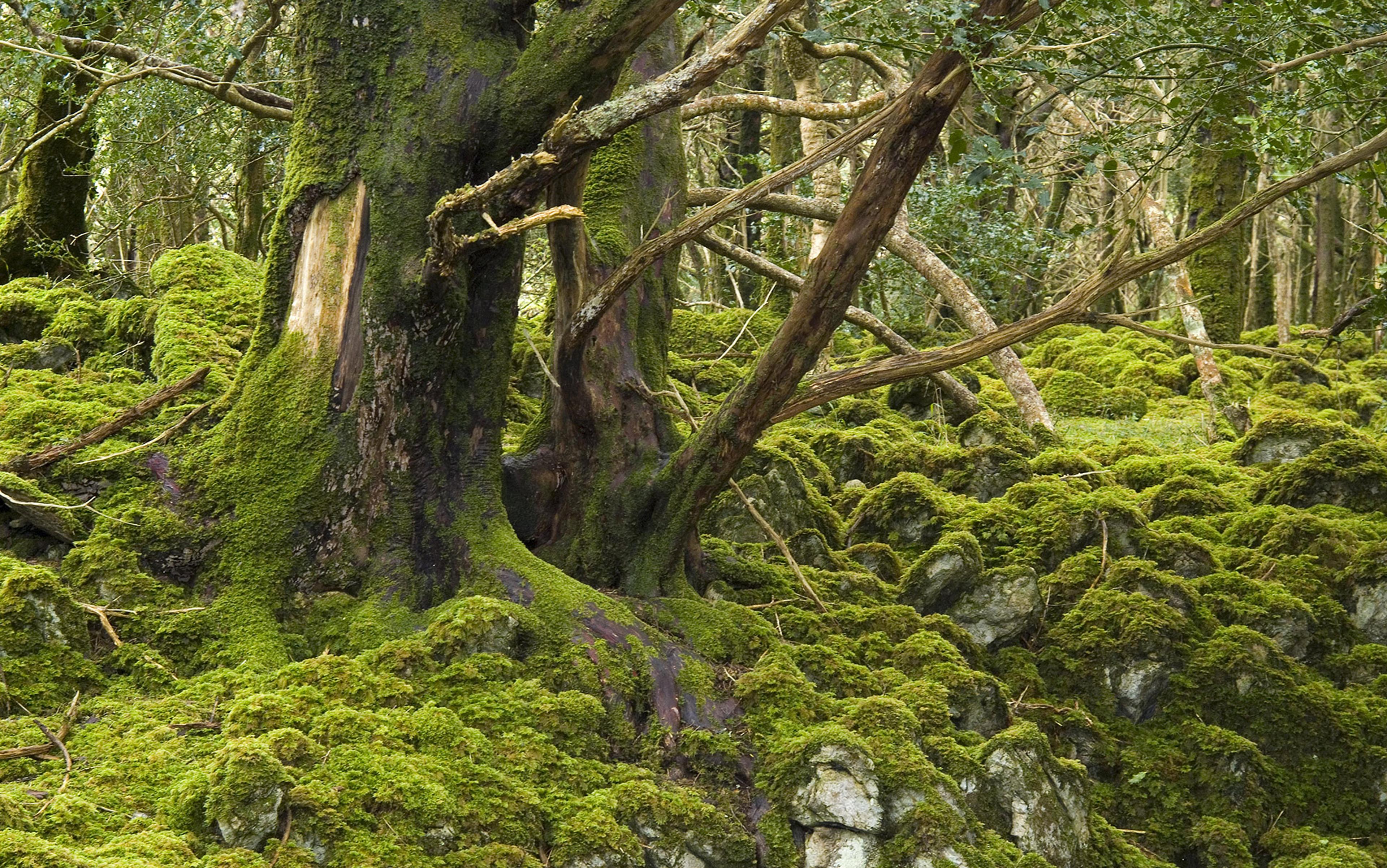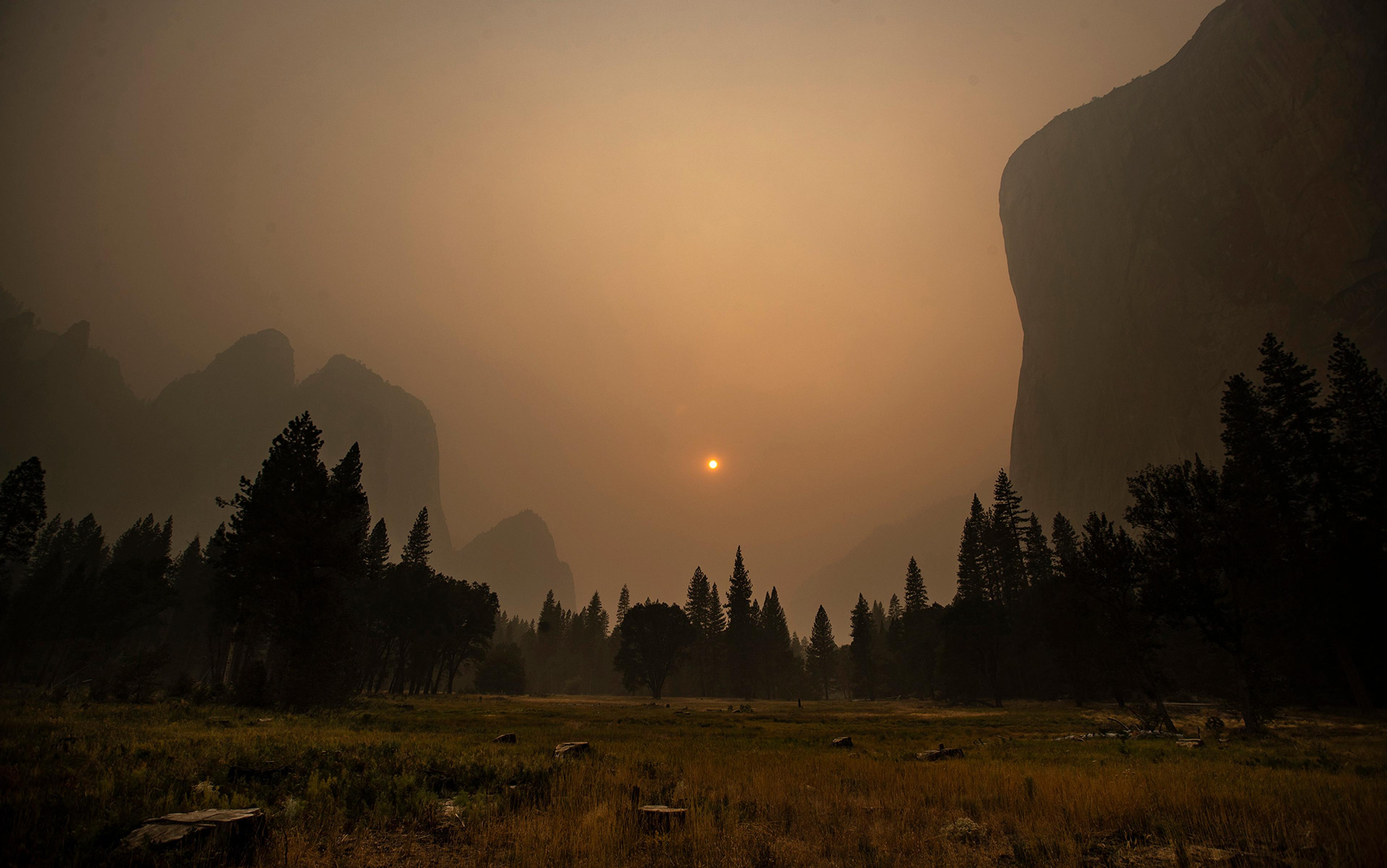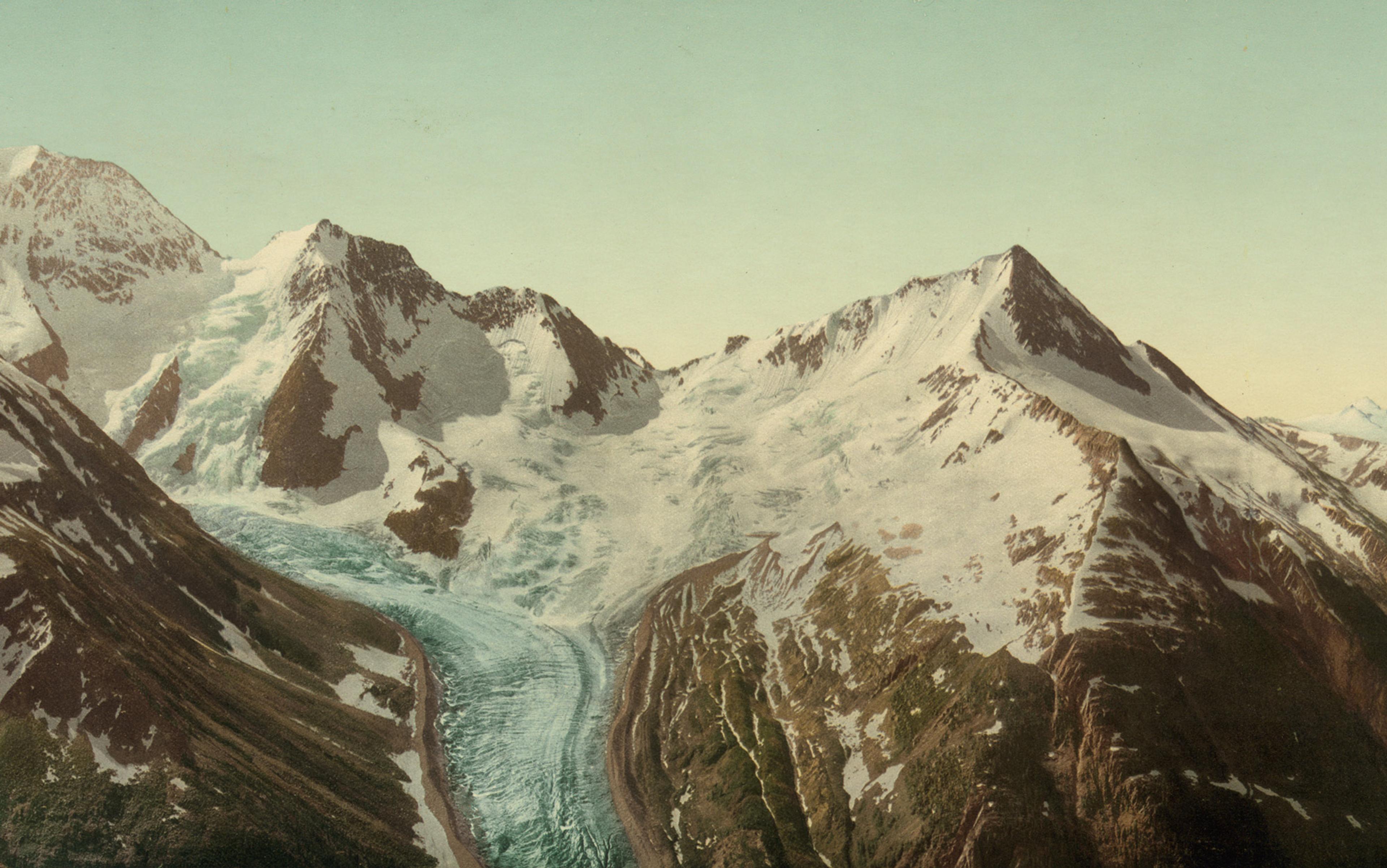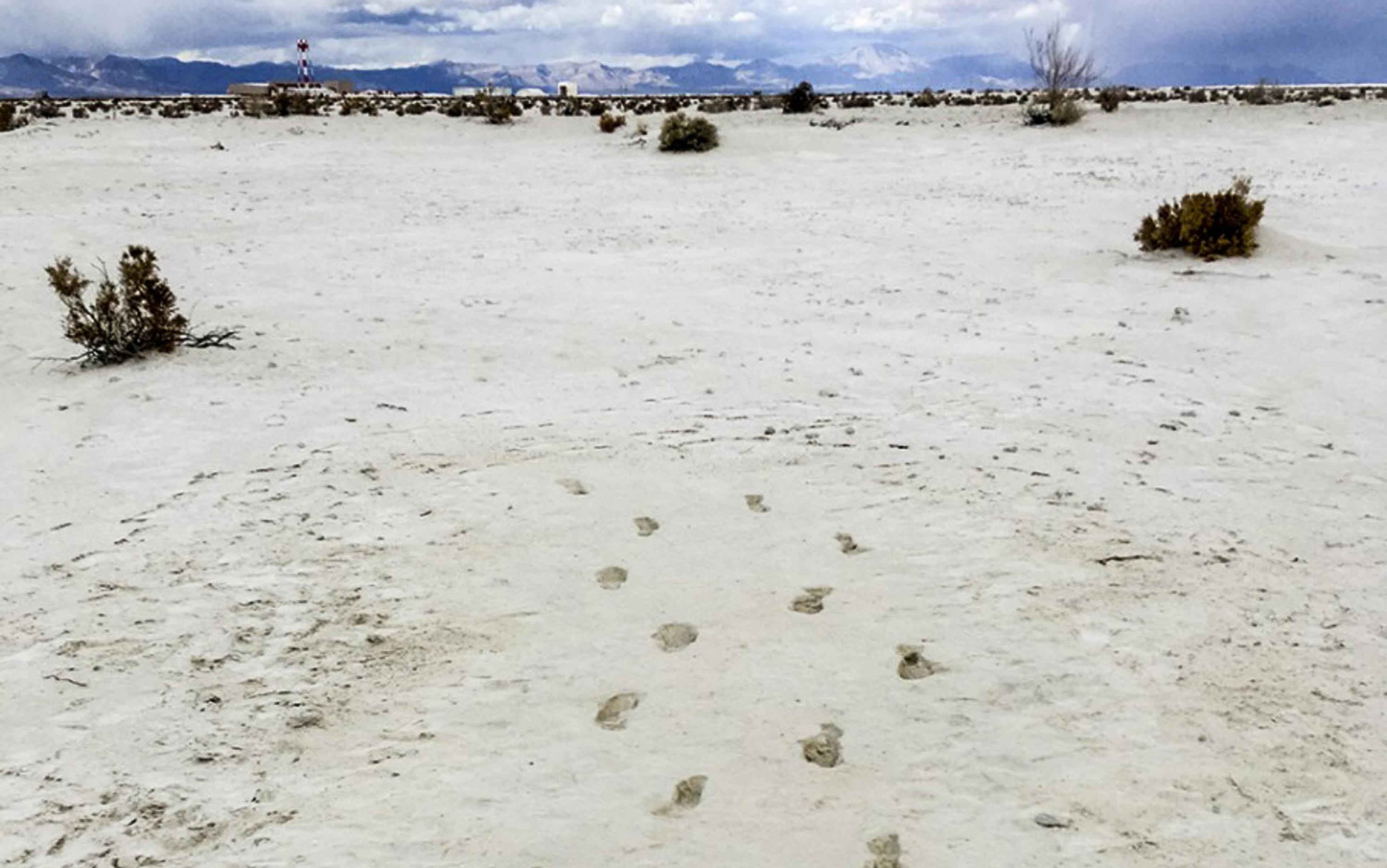No event, however momentous, leaves an everlasting imprint on the world. Take the cosmic background radiation, the faint electromagnetic afterglow of the Big Bang. It hangs, reassuringly, in every corner of our skies, the firmest evidence we have for the giant explosion that created our universe. But it won’t be there forever. In a trillion years’ time it is going to slip beyond what astronomers call the cosmic light horizon, the outer edge of the observable universe. The universe’s expansion will have stretched its wavelength so wide that it will be undetectable to any observer, anywhere. Time will have erased its own beginning.
On Earth, the past is even quicker to vanish. To study geology is to be astonished at how hastily time reorders our planet’s surface, filling its craters, smoothing its mountains and covering its continents in seawater. Life is often the fastest to disintegrate in this constant churn of water and rock. The speed of biological decomposition ensures that only the most geologically fortunate of organisms freeze into stone and become fossils. The rest dissolve into sediment, leaving the thinnest of molecular traces behind.
Part of what separates humans from nature is our striving to preserve the past, but we too have proved adept at its erasure. It was humans, after all, who set fire to the ancient Library of Alexandria, whose hundreds of thousands of scrolls contained a sizable fraction of classical learning. The loss of knowledge at Alexandria was said to be so profound that it set Western civilisation back 1,000 years. Indeed, some have described the library’s burning as an event horizon, a boundary in time across which information cannot flow.
The burning of books and libraries has perhaps fallen out of fashion, but if you look closely, you will find its spirit survives in another distinctly human activity, one as old as civilisation itself: the destruction of forests. Trees and forests are repositories of time; to destroy them is to destroy an irreplaceable record of the Earth’s past. Over this past century of unprecendented deforestation, a tiny cadre of scientists has roamed the world’s remaining woodlands, searching for trees with long memories, trees that promise science a new window into antiquity. To find a tree’s memories, you have to look past its leaves and even its bark; you have to go deep into its trunk, where the chronicles of its long life lie, secreted away like a library’s lost scrolls. This spring, I journeyed to the high, dry mountains of California to visit an ancient forest, a place as dense with history as Alexandria. A place where the heat of a dangerous fire is starting to rise.
Dendrochronology, the study of tree rings, takes its name from the Greek words dendron, meaning ‘tree limb’ and khronos, meaning ‘time’. It is a young discipline, an offshoot of astronomy – a science itself obsessed with the measure of deep time. In 1894 the father of dendrochronology, Andrew Ellicott Douglass, was an assistant to Percival Lowell, the astronomer who popularised the notion that Mars is ringed with canals. Douglass had exhibited a remarkable fluidity of mind well before he caught Lowell’s eye. At Trinity College, Connecticut, he had taken degrees in physics, geology and astronomy, earning honors in all three. Douglass was hired to assist Lowell in a series of detailed observations of the red planet, but in his spare time he was nurturing a new idea about the sun. He had begun to wonder if sunspots, magnetic irregularities on the solar surface, could swing the Earth’s climate enough to affect growth in trees, and if some record of these swings might be divined from tree rings. He wondered if trees inscribed celestial events into their rings.
Douglass was hardly the first to see tree trunks as oracles or sources of knowledge — a myth has it that the idea of a circle first passed into the human mind by way of a tree stump. Nor, remarkably, was he the first to correlate tree rings with climate. In the fourth century BC Theophrastus, a pupil of Aristotle, wrote a nine-volume study of botany, wherein he noted that trees produce new rings annually. In the 16th century, Leonardo da Vinci went a step further, observing in one of his many journals, that ‘rings in the branches of sawed trees show the number of years and, according to their thickness, the years which were more or less dry’.
It was through this pattern, this dispersed archive of recorded starlight, that dendrochronology was born
This April, I visited Ed Cook, a dendrochronologist at Columbia University’s Tree-Ring Lab, just north of Manhattan. Cook, who helped to found the lab back in 1975, is a short, serene man with a deep voice and a long wizardly beard. He has done fieldwork in forests all over the world, but his signature achievement is a North American drought atlas. We’re accustomed to thinking of atlases as representations of space, purely geographical. This atlas captures time as well. To construct it, Cook compiled data from 2,000 separate tree-ring chronologies into a map of the continent’s dry spells — a map that spans thousands of years. Each tree-ring chronology is the product of hundreds of hours spent bent over a microscope, counting and measuring rings on tree cores: smooth, pencil-thin tubes of wood that dendrochronologists bore out from the trunks of trees. When I asked Cook what made him want to spend four decades doing this painstaking work, he paused for a moment, before confiding that it was the mystery of tree rings that hooked him. He said that trees were like a great puzzle, that you had to work carefully to decipher what they were telling you.
Trees owe their rings to an ingenious botanical technology, the vascular cambium, a slimy lining of cells that sits under a tree’s bark like a layer of long underwear. In spring, the cambium’s interior surface produces a new layer of cells that hardens into cream-colored wood. The cambium continues to produce new wood into summer, but as the months go by, its output slowly darkens. This seasonal shading delineates each ring from those around it. From this process we derive one of our most elegant axioms about nature, a piece of folk wisdom we all learn in childhood: to count the rings of a tree is to count the years of its life.
By 1901 AE Douglass was tiring of Lowell’s eccentricities, especially his obsession with Martian canals — an obsession that eventually led to a falling out between the two men. Douglass was also keen to test his theory of sunspots and trees, and so he began studying tree rings in old stands of ponderosa pine near his observatory in Flagstaff, Arizona. He was looking for patterns of thin growth that coincided with years known for high sunspot activity. At Columbia, Ed Cook explained to me that evidence of such a pattern typically requires core samples from more than 20 trees. A single tree’s rings are not enough, because they might only reflect changes in that tree’s immediate surroundings. In 1904, Douglass made a startling finding. He discovered thin growth in a number of local ponderosa pines for the years 1899 and 1902, both of which were known for sunspot outbreaks. The pattern was dubbed the ‘Flagstaff Signature’, and Douglass would go on to find it in trees throughout Arizona. It was through this pattern, this dispersed archive of recorded starlight, that the science of dendrochronology was born.
It didn’t take Douglass long to realise that he had stumbled onto an extraordinary insight, with applications far beyond astronomy and botany. In 1929 he constructed a tree-ring chronology that went back 1,000 years, which he used to help archaeologists date wooden beams from Pueblo ruins perched beneath desert cliffs in America’s south-west. In the years that followed, Douglass would go on to date more than 40 separate Native American ruins, revolutionising the region’s history and making his reputation as a scientist. He detailed his findings in an article for National Geographic in December 1929. Striking a triumphant tone, Douglass compared his tree-ring chronology to the Rosetta Stone, boasting that it was ‘more accurate than if human hands had written down the events as they occurred’. As a science, dendrochronology was off to an auspicious start. But it would have to wait several decades before finding its ultimate object of study: the bristlecone pine.
The world’s oldest trees, bristlecone pines belong to a group of ‘foxtail’ pines that live in small alpine pockets of the western United States. Foxtail pines are hardly newcomers to this Earth. Their oldest fossil ancestor dates back more than 40 million years, to the Eocene, the epoch when modern mammals first emerged. Though today the trees are found at between 2,700 and 3,500 metres, their range fluctuates considerably with climate. Because the trees like things dry and frigid, they extend their reach downward in cool, glacial times and recede to high ground in warm periods. In California, foxtail pine fossils have been found as low as 1,500 metres, no doubt the denizens of a previous ice age.
The oldest of the living bristlecones were just saplings when the pyramids were raised. The most ancient, called Methuselah, is estimated to be more than 4,800 years old
In March this year, I paid a visit to these extraordinary beings on an arid strip of dolomite atop California’s White Mountains. Located just north of Death Valley, the White Mountains are some of the driest on the planet. Visiting the trees in March meant trudging several miles through snow at just over 2,700 metres, as road access to the bristlecones is closed through May. It also meant that the forest was empty, as deserted of human beings as it has been for all but a brief flicker of its history.
It is hard to resist cliché when conveying the antiquity of the bristlecone pine. The oldest of the living bristlecones were just saplings when the pyramids were raised. The most ancient, called Methuselah, is estimated to be more than 4,800 years old; with luck, it will soon enter its sixth millennium as a living, reproducing organism. Because we conceive of time in terms of experience, a life spanning millennia can seem alien or even eternal to the human mind. It is hard to grasp what it would be like to see hundreds of generations flow out from under you in the stream of time, hard to imagine how rich and varied the mind might become if seasoned by five thousand years of experience and culture.
The bristlecones owe their alpine habitat to the cresting of an ancient geological swell, a great wave rippling through the rock of Earth’s crust. The trees sit atop the White Mountains, but it is the neighbouring Sierra Nevada — the highest range in the contiguous United States — that creates the arid conditions they crave. More than 200 million years ago, deep beneath the Earth’s surface, an oceanic plate began sliding under America’s west coast. The friction of that event filled the local crust with great plumes of granite, a volcanic rock known for its glittering quartz. Out of this deep, crustal sliding arose mountains and volcanoes, craggy giants that millions of years would smooth into rounded stubs. But time would resurrect them eventually. Less than five million years ago — in a sense, the geologic present — new mountains of ancient granite began to rise from the grave of that ancestor range. Today they hover more than 4,000 metres above the neighbouring Pacific Ocean. Over time, water — both liquid and glacial — has carved their peaks into thin wedges, snow-whitened dorsal fins of exposed granite. Together they make up the Sierra Nevada, the great, gleaming spine of California. As you read this, they are still rising.
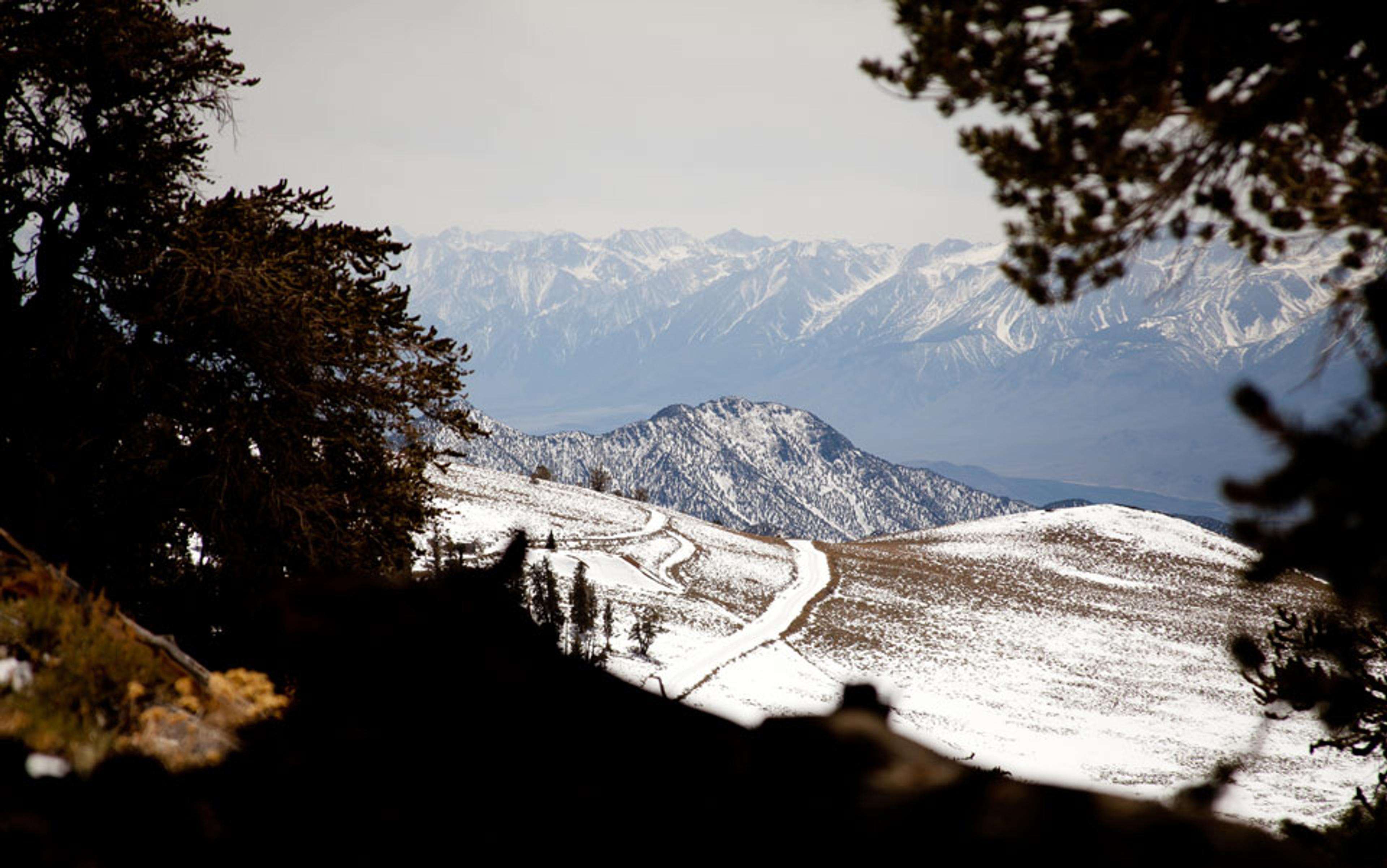
Near the summits of the White Mountains, in the rainshadow of the Sierras, the bristlecones find the cold, dry solitude that they need to survive. A view looking from the bristlecone groves aross to the Sierra Nevada ridge.
The Sierra is important to this story because its high ridge forms the rain shadow that makes possible the dry air beloved by the bristlecones. When Pacific storms move east from California’s coast, the granite wall of the Sierra ridge deflects their moisture, funnelling it into some of the world’s largest, most spectacular alpine lakes. All that slips through to the White Mountains is a strong, dry wind, and that’s just the way the old trees like it. Indeed, from the right vantage point, the bristlecones on the high, western slopes of the White Mountains almost seem to reach out to the Sierra, their gnarled branches twisted into an arboreal pantomime of worship.
From this elevated perch, these elderly trees have borne witness to the rise of a new geological age, a successor to the Holocene. This new age is called the Anthropocene, or ‘age of humans’, and it refers to the stretch of time during which we have begun to reshape the Earth’s chemical makeup. The idea of this new age arose just over a decade ago, as scientists began to realise that the geological record would likely bear the marks of human activity for aeons to come. There is still a question as to whether the term will enter the official geological lexicon, and there is fierce debate about whether the Anthropocene began with the Industrial Revolution, or with the development of agriculture some 10,000 years ago. But this much is certain: one of its signature features is massive deforestation.
It was just under 400 million years ago that plants first evolved woody stems in order to propel themselves upward into unobstructed sunlight. That is an ocean of time: 400 million years is nearly double the time it takes the sun to make a full orbit around the Milky Way. Human beings, by contrast, have been around for only 2.2 million years, one 100th of a galactic revolution. Before trees and forests, the biosphere was just a thin layer of life sheathed around the rock of our planet. By the end of the Carboniferous period, named for the carbon-rich rock produced by fossilised vegetation, forests had circled the globe, pushing the biosphere’s ceiling up by hundreds of feet. We are still living off the sunlight they captured: Carboniferous forests were the raw material of most of the world’s coal fields. Canopy-covered forests created the first leaf-shaded ecosystems, which went on to shelter a profusion of new species, becoming, with time, the most biologically productive environments on Earth. Trees also reshaped the planet’s broad, meandering waterways, which had roamed the continents aimlessly for aeons. Their deep roots stabilised riverbanks, helping to corral rivers into predictable, deep-channeled streams. Trees became the tall tent poles of the biosphere, the infrastructure of an entirely new Earth. And they have proved quite durable since, rallying from super volcanoes, sun-blotting asteroids and the continent-mowing glaciers of ice ages. In modern human beings, however, they face an unprecedented foe.
Deforestation began in prehistoric times, but it was not always as brutal or efficient as it is today. Our primate ancestors practised a kind of deforestation by migration, trading the treetops for terra firma and the forests for open plains. Humans are a different story. Anthropologists suspect we have been cutting down trees for as long as we have been around, mostly to harvest raw material for shelter and fire, but also to construct crude bridges to cross rivers into new landscapes. For a time, our tree-felling was no match for the regenerative power of forests. Indeed, today’s indigenous forest peoples demonstrate the human capacity to live within a forest’s natural limits. But over the past 5,000-10,000 years, our fast-growing civilisations have developed the technology to clear trees faster than they can grow back. In that short time — a slim fraction of the forests’ tenure on Earth — we have managed to destroy more than half of them.
And we are getting better at it. During the 20th century, the human population grew 100 times faster than any large animal species has ever grown before. To support the caloric needs of that explosion in biomass, we have systematically torched forests to make room for crops, so that today the landmass devoted to agriculture is the largest land-based ecosystem on the planet. Even where forests do remain, they are surrounded on all sides. The logic of globalisation requires that markets be connected, and that means crisscrossing the Earth’s forests with roads and railways. Only in the Congo Basin and some of the more isolated areas of the Amazon do truly large stretches of forest remain intact, and even those might not last the century. The world’s trees are, in every sense, under siege.
By 1932, AE Douglass had become so busy with dendrochronology that he hired an assistant to help him with fieldwork, a 24-year-old New Yorker named Edmund Schulman. Until that point in his life, Schulman had spent little time in forests. After a childhood spent in Brooklyn, he bounced around a bit academically, taking classes at New York University and Brooklyn College. Eventually he completed his BSc at the University of Arizona, and, after a stint with Douglass, a PhD in climatology from Harvard.
Douglass and Schulman were an odd couple. Douglass had an intuitive style, reminiscent of the boldness of Victorian scientists who thrived on singular moments of great insight. Schulman, whose black glasses and necktie gave him the look of an accountant, was the straight man, the data hound who kept careful records. In our conversations at Columbia, Ed Cook had been quick to praise Douglass’s genius, but he seemed to reserve his deepest admiration for Schulman, whom he credited with bringing a quantitative approach to dendrochronology. It was Schulman, Cook said, who made it into a rigorous science.
In 1939, Schulman began a search that would span the whole of his remaining life, a search for the world’s oldest trees. He knew a truly ancient tree would yield a more expansive vision of the Earth’s climate. A tree with thousands of rings would allow climatologists to hover in space for centuries, watching glaciers crawl up and down the continents; it would let them wormhole into springs and summers past; it would let them see the real seasons of Earth.
In Dante the forest is demon-haunted and evil, the underworld out of which the hero must ascend
Schulman began his hunt in Bryce Canyon, a dry, desert wilderness in Southern Utah, known for its spectacular geology. His first summer there he found an 860-year-old ponderosa pine at 2,000 metres. Later, moving up into Central Utah, he found an even older tree, a 975-year-old pinyon pine. Both of these trees were old, but neither compared with a legendary 3,000-year-old sequoia tree that John Muir claimed to have found in Yosemite. In 1953, new research convinced Schulman to shift the course of his search to high-altitude trees. He speculated, in an article for Science, that there might be alpine trees that were 2,000 years old. Schulman was especially keen on sequoia trees, on account of the Muir legend, but he also mentioned bristlecones in the article, noting that those found in the White Mountains had been ‘recognised by forest personnel as likely to reach unusual ages’.
It is not surprising that it took science so long to find the bristlecone pines. These trees rank among the most isolated organisms on Earth. They have spent tens of millions of years crawling away from the planet’s fertile havens, the mild climates and nutrient-rich environments that encourage biodiversity. Not content with the solitude of thin mountain air, these ascetic trees anchor down in nutrient-bereft dolomite, a grey rock that most plants cannot abide. Their muscular roots octopus around underground boulders, forming a base that can keep them rigid and standing for thousands of years after death. Thomas Harlan, a longtime researcher at the Arizona tree-ring lab founded by Douglass, told me he once found a snag of bristlecone wood that had remained rigid for more than 8,000 years. I won’t forget the first time I saw one of these erect tree-corpses, leering at me like a scarecrow beside the snow-covered road. The tree’s exposed wood had aged into rich tones of gold and copper, and it seemed to leap out of the rock like a petrified flame.
To see the living bristlecones is to be struck by their beauty, but also by their strangeness. Of the first 30 that I saw in the White Mountains, no two were alike. Some were stooped, some tall; others had multiple trunks and intricately spiralling limbs. The trees owe their unique morphologies to the special way their roots and trunks are connected. A normal tree pools its resources: it slurps up water with its roots and then sends it around the base of its trunk, nourishing each sector of its bark equally. Bristlecone roots do not share water in this way. Instead, they connect directly with a particular section of bark. If a root is damaged or otherwise unproductive, its attached strip of bark dies. Each sector fends for itself in a kind of intra-organism longevity contest.
This trees-within-a-tree style of growth is what gives ancient members of this species their singular appearance. As saplings, they look like symmetrical cones, Christmas trees in miniature. But given sufficient time, their sectors begin to diverge, as tiny environmental advantages and disadvantages accumulate over hundreds, even thousands, of years. The tree might spiral and thicken on one side and die on the other, transforming itself into a swirling, wooden Janus. Among the truly ancient bristlecones I saw trunks ringed entirely in exposed wood but for a single holdout: a strip of bark aglow with green needles and the singular fragrance of pine. These Dali-painted trees, called single-strip survivors, can carry on for thousands of years after the death of their other sectors. The dense grain of the dead wood stays rigid over all that time, giving form to the surviving sliver of tree and pushing its needles, its solar panels, high into the sunlight.
Those needles, long-lived in their own right, can stay productive and green for more than 40 years, but they abhor neighbours, preferring the sun of sparse stands to the shade of dense forests. This spacing protects the trees from quick-spreading fires, and it makes for a singular forest aesthetic. Hiking through the wide hallways of the bristlecone forest, I noticed each tree was pedestalled on its own root-encrusted island of earth, backlit by blue sky, giving off the dignified air of solitude. Even the thickest patches had their vistas, their long horizons. Pausing for a moment to catch my breath in the thin air, I turned my back to the mountain. In the distance I could see oceans of cold sunlight roaring off the Sierra Nevada.

The dead continue to stand among the living: the wide spaces between these solitary beings helps protect them from contagions of pests and fire
This experience of openness and sublimity among the bristlecones is at odds with fundamental Western ideas about forests, ideas that might have something to do with our peculiar animosity towards them. Indeed, a suspicion of forests as dark, shadowy places is written into the basic texts of Western culture. In Greek mythology, Dionysus, the ivy-wreathed god of the ‘wooded glens’, threatens civilisation with a return to animalistic primitivism. In the Old Testament, Yahweh commands Hebrews to burn down sacred groves wherever they find them. Christian culture has traditionally identified the forest as a pagan stronghold, a gloomy haven for witches and outlaws. In Dante the forest is demon-haunted and evil, the underworld out of which the hero must ascend. For Descartes the forest is the precursor to enlightenment, the physical embodiment of confusion, the maze that the light beams of reason must penetrate.
The Stanford literary critic Robert Pogue Harrison has an interesting theory about our weariness of forests. In his 1992 book Forests: The Shadow of Civilisation, he suggests that, at a subconscious level, we resent them for their antiquity, their antecedence to humans. Drawing from the work of the 18th century Italian philosopher and historian Giambattista Vico, Harrison traces the human dread of forests to the origin myths of sky gods such as Jove, who ruled over Rome as Jupiter and over Greece as Zeus. According to legend, Jove first announced his existence to aboriginal humans by sending lightning into primeval forests. He did this to clear a hole in the tree canopy, to open up the ‘mute closure of foliage’, as Harrison calls it, so that humans could see the sky for what it was: a divine entity, a sender of signs, a source of revelation about our origins and our destiny. As Harrison explains,
The abomination of forests in Western history derives above all from the fact that, since Greek and Roman times at least, we have been a civilisation of sky-worshippers, children of a celestial father. Where divinity has been identified with the sky, or with the eternal geometry of the stars, or with cosmic infinity, or with ‘heaven’, forests become monstrous, for they hide the prospect of god.
Embedded in these myths and legends is an uncomfortable truth for a culture that, until quite recently, believed itself to occupy the physical and teleological centre of the universe. The myths betray an ancient, long-stifled awareness that forests preceded human consciousness; that they were a precondition of it.
In 1953, Edmund Schulman spent his summer doing fieldwork in the Idaho countryside where, the year before, he had found another old tree, a 1,650-year-old pine. On his long drive back to the tree-ring lab in Arizona, he made a stop in the White Mountains to visit the bristlecone pines, to see if there was any substance to the persistent rumors of their antiquity. As it happens, he nearly missed them. Schulman had spent a fair amount of time in Yosemite Valley sampling John Muir’s giant sequoias. In sequoias, height is a decent proxy for age, a correlation that Schulman assumed extended to all alpine conifers. When he went to see the bristlecones, he spent the bulk of his time poking around the younger trees, which were tall and had the majority of their sectors intact. Schulman cored several of these tall bristlecones and found them to be aged, but not ancient. Most were under 1,000 years old.
Left to its own devices a bristlecone pine could live forever, perpetually regenerating itself like an ever-expanding set of flawless Russian dolls
One afternoon, on a whim, he decided to venture to the high mountainside south of the tall trees, where a small forest of drooping, sickly looking bristlecones could be seen radiating downward from the peak. As sunset neared, he scrambled up the mountain finding thick, gnarled trees along the way, some scarcely five metres tall — less than half the height of the young trees across the valley. This was at a time when Schulman still did his own mountaineering (in the years to follow, he would sit from a comfortable vantage point and direct graduate students toward trees he wanted cored, yelling and signaling while they scrambled on the rocky hillside). That afternoon in 1953, as dusk hit, Schulman settled on a tree that looked promising enough to core. He drilled into it, extracted a sample, and then hurried back to camp to beat the darkness starting to pool in the valley between the Sierra and the White mountains. That night, by the fire, Schulman began to count the rings of the bristlecone core, finding them so thin and dense that 100 fit into a single inch. Straining in the light of the campfire, he ticked off century after century, more than 30 in all. Schulman had found a 3,000-year-old tree, the oldest then known to science. A tree older than Christ.
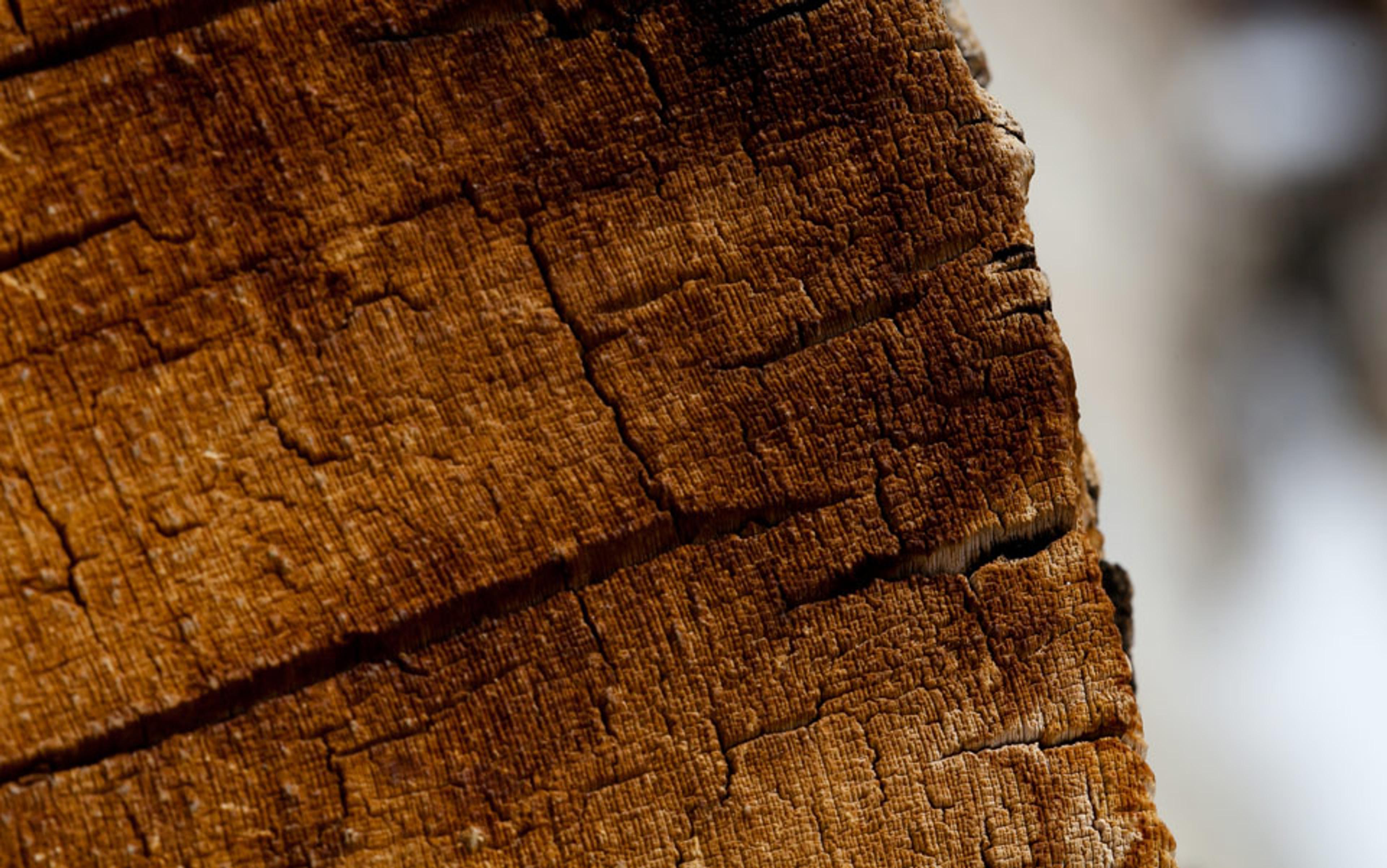
Bristlecone pine rings: they are so fine and dense that over a century of life can be embodied in a single inch of wood
It is not unusual to feel wonderment, and a small measure of envy, at the longevity of the bristlecone pine. Indeed, humans have poured a great deal of energy and ingenuity into prolonging life, with little success. Though modern medicine has extended many lives, no human has ever lived beyond a century and a quarter. Even in the realm of story and miracle, where the imagination faces fewer restrictions, long-lived humans, usually sages or kings, live a millennium at most. The most famous of these, Methuselah, for whom the oldest bristlecone pine is named, lived just 969 years according to biblical tradition. To hear of the extreme ages of these trees is to wonder how they outlast us so decisively. How do they fend off the entropic crush of the universe for so long?
As far as botanists can tell, bristlecones don’t seem to age in the way we do. A close look at their rings reveals that the wood they produce thousands of years into their lives is as fresh as sapling wood: it bears no sign of age-related mutation. Bristlecones have also learned to mirror the vicissitudes of their harsh environment by limiting their growth in times of drought. In the driest years, the bristlecones all but shut down, adding only the slenderest of rings — sometimes just a cell’s width — to their surviving sectors. But this downshift isn’t permanent. When rain returns, the tree roars right back to life: its roots gulp up water, its silver-green needles suck down carbon and sunlight, and before long, the tree’s photosynthetic factories are humming along again, feeding the cambium’s growth spasms. Left to its own devices, a bristlecone pine could live forever, perpetually regenerating itself, like an ever-expanding series of flawless Russian dolls.
But the bristlecone doesn’t live in a vacuum; like any tree, it is vulnerable to pests and predators. Though the tree is armed with an unusually thick resin, a kind of sticky, wound-clogging blood that flows through its limbs and trunk, its best protection is its choice of environment. It finds itself alone on this tough, dry mountaintop, far removed from the bark-gnawing beetles and wood-rotting fungi that might otherwise threaten it. In the end, the tree endures extreme environmental hardship so that it doesn’t have to endure company: its solitude is its salvation.
The bristlecone pine is so isolated and so well suited to its environment that, until quite recently, its worst enemy was time. If you live 4,000 years, you live long enough to be unlucky, long enough to fall victim to the kind of random events that the Earth’s short-term tenants are spared. John Muir once wrote, of ancient sequoias, that ‘of all living things, the sequoia is perhaps the only one able to wait long enough to make sure of being struck by lightning’. In the bristlecone forest, I saw several ancient trees that bore the scars of lightning strikes. And even when they manage to dodge Jove’s wrath, the trees can’t escape the rise and fall of geology’s tides. Indeed, the oldest often sit atop a tangle of exposed roots, their twisting bulk laid bare by thousands of years of erosion. Though the bare roots are as thick as anacondas, they can’t withstand alpine conditions forever. Eventually they will die, and the trees they support will crash to the forest floor, victims of their own longevity.
In 1958 Schulman wrote an article for National Geographic, describing the extraordinary trees he had found in the White Mountains. After 1953 he had gone on to discover twenty different 4,000-year-old trees, including Methuselah, the oldest living tree today, and Prometheus, a 4,900-year-old tree cut down by mistake in 1964. The impact on the science of dendrochronology was enormous, and like Douglass’s discovery of the Flagstaff Signature, the benefits spilled over into other sciences, especially those attempting to get a better grip on the past. The ancient trees were instrumental in calibrating the radiocarbon curve, the lodestar that scientists use to date carbon-bearing material less than 58,000 years old. They also helped ecologists to better understand the structure of forests, the most complex ecosystems on Earth.
In the past we have menaced trees with axes and torches, but now it will be the hot, aggregated exhaust of our civilisations
Schulman never saw his article published in National Geographic – or the extraordinary scientific breakthroughs that followed. He died of a heart attack at the age of 49, just two months before it hit newsstands in March 1958. But the bristlecones would pay Schulman a lasting tribute, by reserving their most valuable secrets for his discipline: climatology. The most useful bristlecones are those that sit high in the White Mountains, near the edge of the tree line. Like all bristlecones, they are meticulous recorders of climate, because they tune their growth to it so precisely. But the high trees have another advantage. While the low-altitude bristlecones grow in response to rainfall, those near the tree line tailor their growth to temperature. Their rings are like stilled thermometers retrieved from a time machine. Dendrochronologists at Arizona’s Laboratory of Tree-Ring Research have used the high living trees, and their dead ancestors, to piece together a tree-ring chronology stretching back 8,840 years, nearly the entirety of the Anthropocene.
The chronology tells a familiar tale about what is happening to the Earth’s climate. In 2005, a researcher from Arizona’s tree-ring lab named Matthew Salzer noticed an unusual trend in the most recent stretch of bristlecone tree rings. Over the past half century, bristlecones near the tree line have grown faster than in any 50-year period of the past 3,700 years, a shift that portends ‘an environmental change unprecedented in millennia,’ according to Salzer. As temperatures along the peaks warm, the bristlecones are fattening up, adding thick rings in every spring season. Initially there was hope that the trend was local to the White Mountains, but Salzer and his colleagues have found the same string of fat rings — the same warming — in three separate bristlecone habitats in the western US. This might sound like good news for the trees, but it most assuredly is not. Indeed, the thick new rings might be a prophecy of sorts, a foretelling of the trees’ extinction.
Remember that bristlecone pines thrive in isolation. They owe their longevity to their ability to withstand the rigors of an environment that is inhospitable to their predators. If the White Mountains continue to warm, the next generation of trees will be forced to move higher in the range to find the cool temperatures and isolation they crave. Bristlecones do come equipped with an escape plan of sorts. Their seeds have long, translucent wings attached to them, and if the wind is right, they can fly long distances, pushed aloft by alpine breezes. Under ordinary circumstances the seeds could help the trees to climb up these mountains in a generation or two. But there isn’t much room to move here, because the bristlecones are already flirting with the peaks. A prolonged period of warming will leave them trapped on the summits, with nowhere to go. Meanwhile, bark beetles and fungi, pests that can make quick work of entire forests, will see their habitats expand. They will charge up the White Mountains, headed straight for the bristlecone pines.
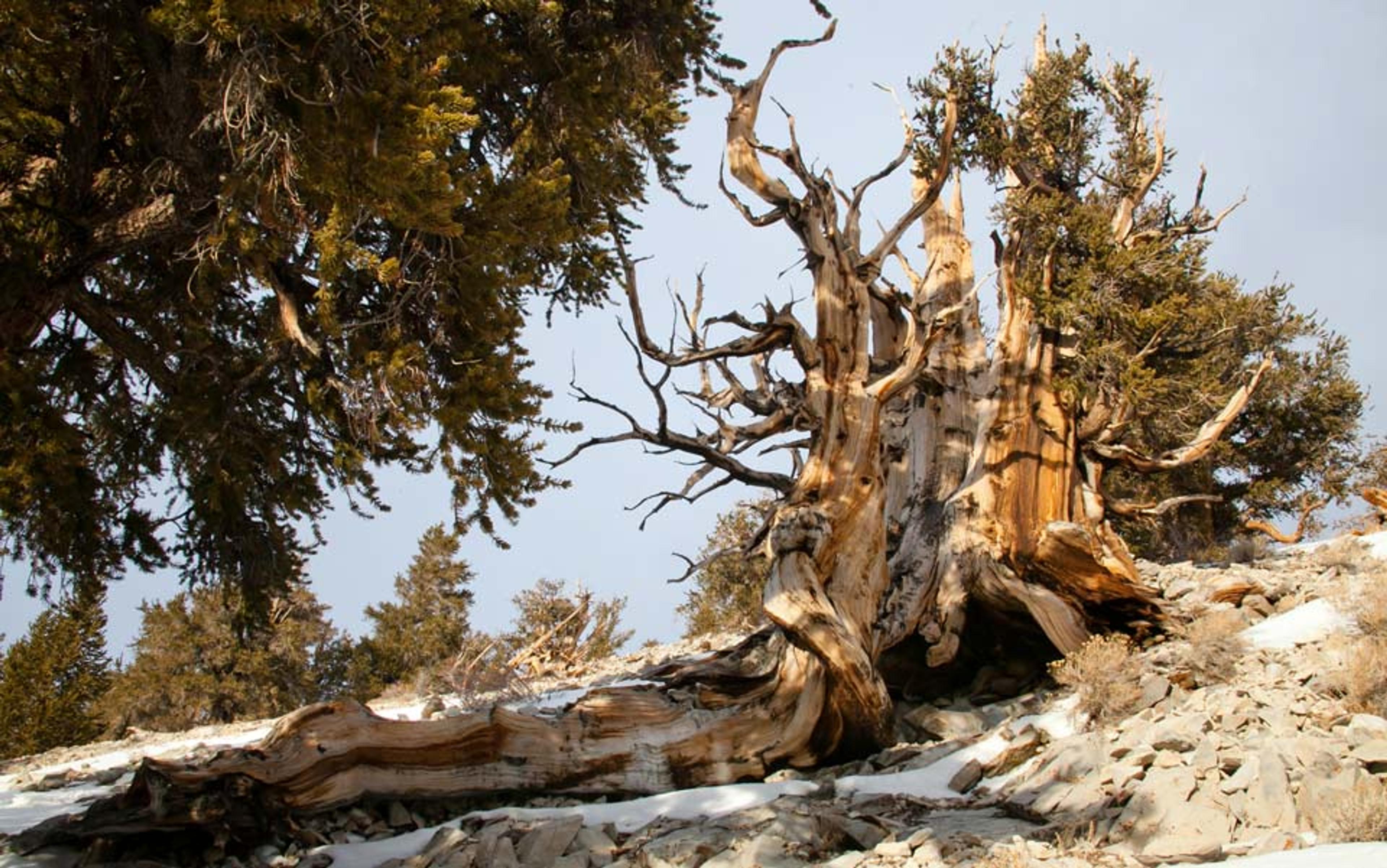
The oldest bristlecones, with their odd puzzles of living and dead limbs, are dwarfed by their younger kin. These vigorous young trees may not survive if the mountains continue to warm and there is nowhere higher for their offspring to colonise.
If global warming drives these trees to extinction it will signal an evolution in the technology of deforestation. In the past we have menaced trees with axes and torches, but now it will be the hot, aggregated exhaust of our civilisations. Deforestation once arose out of our animosity towards particular forests, those that stood in the way of our future homes and crops. But deforestation is becoming delocalised; it is becoming an unavoidable byproduct of our existence, a diffuse, Earth-spanning emanation no tree can escape – even those that take root at the far reaches of the bio-inhabitable world.
I asked Thomas Harlan, a longtime researcher at Arizona’s tree-ring lab, if there were signs that the trees were starting to migrate. He told me about a new sapling he had found well above the tree line in the White Mountains. ‘I can take you up to a point that’s higher than any living tree, and higher than any of the dead trees we’ve ever found, and I can show you where, two years ago, I found a little foot-high bristlecone pine growing,’ he said. Harlan explained that the tree was entering one of the most vulnerable periods of its life. ‘Whenever a tree gets to the point where it’s higher than the snow level, the winds are going to beat it to pieces in the winter, and so whether it will survive or not I don’t know,’ he said.
‘But,’ he added, ‘it might be a sign that the trees are starting to advance up the hillsides again.’
It is interesting to think of the different fates that might await Harlan’s sapling. It could live to see the wonders of the year 6000, etching 4,000 summers into its thin-ringed diary. But it might also die early, vanishing this winter or next, or in a few hundred years, along with this grove and the rest of the bristlecone pines. These strange, memory-laden trees might turn out to be nothing more than a brief bloom of wildflowers in the scheme of deep time.
Harlan was circumspect about the trees’ odds of survival. ‘With bristlecone pines, you have to be patient,’ he told me. ‘Come back in 200 years and I’ll tell you more.’
Sitting under an old bristlecone in the cool April sun, I thought of Edmund Schulman, for whom this grove is named. I thought about the tragic contradictions of the human animal, this strange species that reads trees, but also destroys them. Over the course of 400 million years, trees built up a fertile new layer on the Earth’s surface, a layer that incubated entirely new ecologies, including those that gave rise to our ancestors. But now it is humans who spread out over the planet, coating its surface in cities and farms, clearing away the very trees that enabled our origins. This forest, like so many others, has become an intersection in time, a place where narratives of geologic grandeur are colliding. A place to put your ear to the ground, a place to confirm that even here, in the most ancient of groves, if you listen closely, you can hear the roar of the coming Anthropocene.

